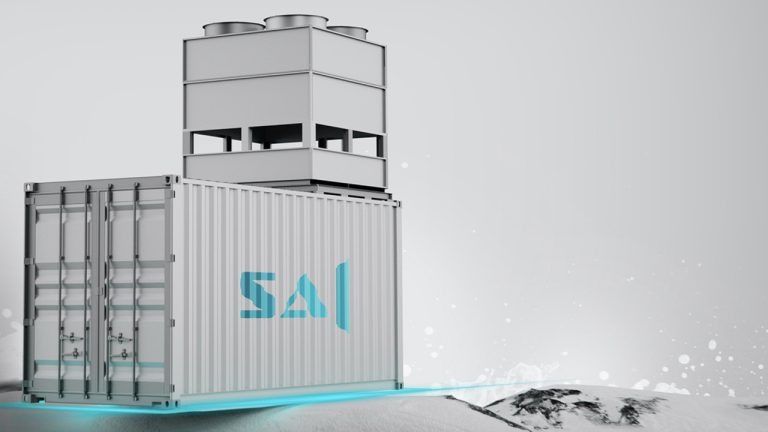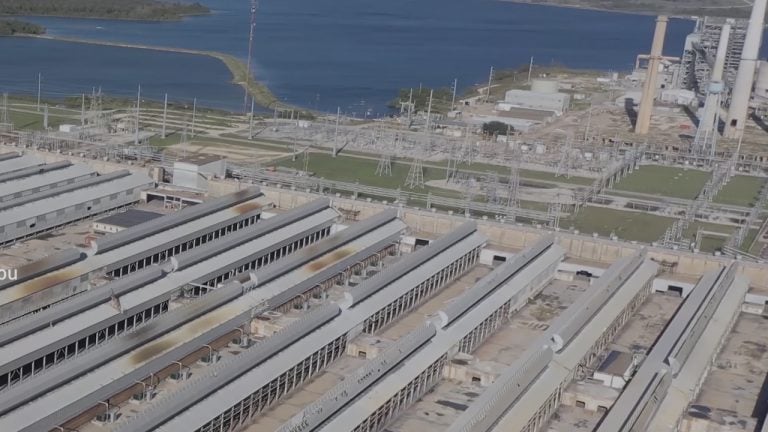 The Nasdaq-traded company specializing in bitcoin mining, Bitdeer, has unveiled its strategy to boost its overall hashrate by an additional 3.4 exahash per second (EH/s) through the deployment of its proprietary Sealminer A1 mining devices. These advanced rigs are slated for setup within Bitdeer’s mining facilities located in Texas and Norway, targeting the latter half […]
The Nasdaq-traded company specializing in bitcoin mining, Bitdeer, has unveiled its strategy to boost its overall hashrate by an additional 3.4 exahash per second (EH/s) through the deployment of its proprietary Sealminer A1 mining devices. These advanced rigs are slated for setup within Bitdeer’s mining facilities located in Texas and Norway, targeting the latter half […] Bitdeer, a bitcoin miner, recently announced the launch of what it refers to as its “first cryptocurrency mining chip.” Bitdeer claimed that the chip could potentially improve bitcoin mining performance without excessive power consumption. New Rig to Help Bitcoin Miners Minimize Operational Costs Bitdeer, a leading bitcoin mining firm, has launched what it describes as […]
Bitdeer, a bitcoin miner, recently announced the launch of what it refers to as its “first cryptocurrency mining chip.” Bitdeer claimed that the chip could potentially improve bitcoin mining performance without excessive power consumption. New Rig to Help Bitcoin Miners Minimize Operational Costs Bitdeer, a leading bitcoin mining firm, has launched what it describes as […]
The company entered into a $150 million share purchase agreement with B. Riley Financial on Aug. 10.
Bitcoin miner Bitdeer Technologies, a firm spun-off from prominent Bitcoin Application-Specific Integrated Circuit (ASIC) manufacturer Bitmain, recorded a net loss of $40.4 million in Q2 2023, up from a net loss of $15.6 million in Q2 2022.
The company disclosed in its earnings report published on Aug. 11 that the losses were largely attributed to a $33.2 million listing fee paid to Blue Safari Acquisition Corp relating to Bitdeer's listing on the U.S. NASDAQ exchange. The firm's revenue increased by 5.2% to $93.8 million. The same day, Bitdeer's stock was up over 40% on news of a $150 million share purchase agreement with B. Riley Financial. The company's current market capitalization stands at $1.5 billion.
Year over year, Bitcoin's (BTC) hash rate increased from 10.5 exahash per second (EH/s) in Q2 2022 to 18.8 EH/s. Bitdeer's ASIC undermanagement grew from 119,000 to 199,000 during the same period. The Bitcoin network's current hash rate stands at 432.94 EH/s. In total, the company mined 758 BTC compared to 521 BTC in Q2 2022. Bitdeer also launched an 18,000-machine mining rig in Bhutan during the quarter and announced the construction of a 175-megawatt mining center in Norway.
In November 2021, Bitdeer announced it would go public via a $4 billion special purpose acquisition company merger. The deal was postponed due to the ongoing crypto winter, only to be finalized in April 2023. After its listing, the company held around $130 million in cash equivalents and $30 million in debt.
Magazine: ‘Elegant and ass-backward’: Jameson Lopp’s first impression of Bitcoin
 After the New York Times was accused of writing favorable pieces about disgraced FTX co-founder Sam Bankman-Fried and inviting him to speak at the news outlet’s Dealbook Summit, it is once again being criticized for publishing a “hit piece” about bitcoin mining. The article’s authors claim that bitcoin mining is harmful to the environment, while […]
After the New York Times was accused of writing favorable pieces about disgraced FTX co-founder Sam Bankman-Fried and inviting him to speak at the news outlet’s Dealbook Summit, it is once again being criticized for publishing a “hit piece” about bitcoin mining. The article’s authors claim that bitcoin mining is harmful to the environment, while […]
The Bitcoin network hashrate has returned to 241.29 EH/s after a temporary 38% fall to 170.60 EH/s from a weekly peak of 276.40 EH/s.
Bitcoin’s network hashrate has returned to regular levels again, days after freezing temperatures across the United States put a strain on the nation's electricity grid — leading to a temporary drop in hashrate.
In the days leading up to Christmas, bone-chilling temperatures swept across the United States, leading to millions without power and claiming at least 28 lives.
According to reports, Bitcoin miners in Texas, which accounts for a significant portion of the country's hashrate, voluntarily curtailed operations to give power back to the grid — so that residents can keep their homes heated.
The disruptions appear to have put a dent in Bitcoin’s hashrate, which typically hovers around 225-300 Exahashes per second (EH/s). This fell to 170.60 EH/s on Dec. 25.
As of Dec. 26 however, the hashrate has returned to 241.29 EH/s, according to data from hashrate mining calculator CoinWarz.
Bitcoin’s hashrate is calculated by measuring the number of hashes produced by Bitcoin miners trying to solve the next block. It is regarded as a key metric in assessing how secure the Bitcoin network is.
The recent events prompted a controversial statement from FutureBit founder John Stefanop, who suggested the fall in hashrate was due to a number of “highly centralized mines” in Texas turning off at the same time.
“I know, does not change the fact that a few large mines in Texas affect the entire network to the tune of 33%...everyones transactions are now being confirmed 30% slower because the hashrate is not decentralized enough,” he said.
“If hashrate was distributed evenly around the world by 10’s of millions of small miners instead of a few dozen massive mines, this event would not have even registered on the network,” Stefanop added.
Bitcoin bull Dan Held however refuted Stefanop’s take on the events, arguing that weather patterns do not mean centralized ownership or control.
According to the Cambridge Bitcoin Electricity Consumption Index, the United States accounts for 37.84% of the average monthly hashrate share. The top four states in the country for Bitcoin mining include New York, Kentucky, Georgia and Texas — all of which had experienced power outages due to the winter storm.
However, Dennis Porter, the CEO of Bitcoin mining advocacy group Satoshi Action Fund noted to his 127,400 Twitter followers on Dec. 25 that while the inclement weather, particularly in Texas, caused 30% of Bitcoin’s hashrate in the United States to go offline, the network “continues to work perfectly.”
Over 30% of the #Bitcoin hashrate has gone offline due to extreme weather in Texas and yet the global #Bitcoin network continues to work perfectly.
— Dennis Porter (@Dennis_Porter_) December 25, 2022
Now imagine if Amazon or Google tried turning off 1/3rd of their data centers. pic.twitter.com/G49iqBZXDL
Cheap power and favorable mining regulation in Texas has led to a Bitcoin mining boom in Texas in recent months, which is now host to some of the largest mining companies in the world.
Among those Riot Blockchain, Argo, Bitdeer, Argo, Compute North, Genesis Digital Assets and Core Scientific — who’ve recently received a $37.4 million bankruptcy loan to stay afloat.
Related: 'There's a lot less land to go around' — Why White Rock established off-the-grid mining in Texas
However recent weather events have only added to Bitcoin mining companies’ list of headaches.
The bear market has plagued Bitcoin mining companies to the tune of $4 billion in debt, according to recent data.
Many notable U.S. based mining companies have filed for bankruptcy in recent months too, while many other companies are approaching near-insurmountable debt-to-equity ratios that require immediate restructuring.
The tragic weather events haven’t impacted the price of Bitcoin (BTC) thus far, which is currently priced at $16,826 — only down 0.27 over the last 24 hours.
 On October 6, Grayscale Investments announced a new venture that gives accredited investors the opportunity to invest in the mining infrastructure that powers the digital asset ecosystem. According to the announcement, the co-investment vehicle is called Grayscale Digital Infrastructure Opportunities (GDIO), and the crypto mining firm Foundry will handle the new product’s operations. GDIO is […]
On October 6, Grayscale Investments announced a new venture that gives accredited investors the opportunity to invest in the mining infrastructure that powers the digital asset ecosystem. According to the announcement, the co-investment vehicle is called Grayscale Digital Infrastructure Opportunities (GDIO), and the crypto mining firm Foundry will handle the new product’s operations. GDIO is […] On September 28, the bitcoin mining operator and clean-technology company, SAI Tech, announced the launch of two liquid cooling bitcoin mining infrastructure products called the Tankbox and Rackbox. The two new models join the firm’s SAIHUB Box and feature plate cooling and immersion cooling technologies. SAI Tech Unveils Tankbox and Rackbox Bitcoin Mining Infrastructure Products […]
On September 28, the bitcoin mining operator and clean-technology company, SAI Tech, announced the launch of two liquid cooling bitcoin mining infrastructure products called the Tankbox and Rackbox. The two new models join the firm’s SAIHUB Box and feature plate cooling and immersion cooling technologies. SAI Tech Unveils Tankbox and Rackbox Bitcoin Mining Infrastructure Products […] According to a representative from the bitcoin mining company backed by the Chinese crypto billionaire Jihan Wu, Bitdeer is crafting a $250 million fund to buy distressed assets from embattled bitcoin miners. Bitdeer’s chief executive officer Matt Kong details that “opportunities” arise in “every cycle.” Bitdeer Wants to Acquire Cheap Machines From Distressed Bitcoin Miners […]
According to a representative from the bitcoin mining company backed by the Chinese crypto billionaire Jihan Wu, Bitdeer is crafting a $250 million fund to buy distressed assets from embattled bitcoin miners. Bitdeer’s chief executive officer Matt Kong details that “opportunities” arise in “every cycle.” Bitdeer Wants to Acquire Cheap Machines From Distressed Bitcoin Miners […] Sources have disclosed that the digital currency mining operation, Bitdeer Technologies, has purchased a high-security storage and display facility in Singapore called Le Freeport for $28.4 million. Bitdeer’s chairman, Jihan Wu, confirmed the vault acquisition via a text message following the reports that revealed the mining firm purchased Le Freeport. Bitdeer Purchases Maximum Security Vault […]
Sources have disclosed that the digital currency mining operation, Bitdeer Technologies, has purchased a high-security storage and display facility in Singapore called Le Freeport for $28.4 million. Bitdeer’s chairman, Jihan Wu, confirmed the vault acquisition via a text message following the reports that revealed the mining firm purchased Le Freeport. Bitdeer Purchases Maximum Security Vault […] The bitcoin mining startup Primeblock has announced plans to go public via a special purpose acquisition company (SPAC) deal. Primeblock will merge with a blank-check firm 10X Capital Venture Acquisition Corp. II, and the company’s shares will be listed on Nasdaq. Primeblock Reveals SPAC Merger With Plans to Be Listed on Nasdaq in the Second […]
The bitcoin mining startup Primeblock has announced plans to go public via a special purpose acquisition company (SPAC) deal. Primeblock will merge with a blank-check firm 10X Capital Venture Acquisition Corp. II, and the company’s shares will be listed on Nasdaq. Primeblock Reveals SPAC Merger With Plans to Be Listed on Nasdaq in the Second […]